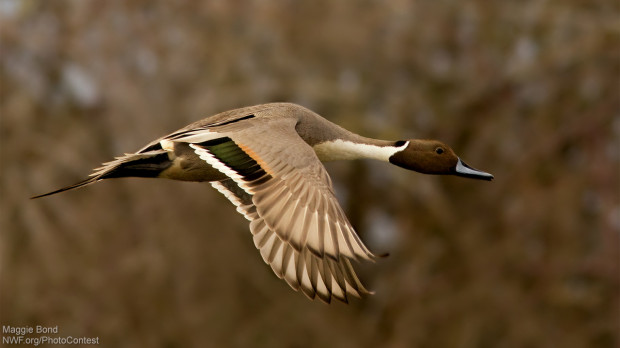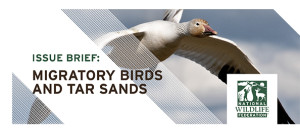We have much more to do and your continued support is needed now more than ever.
The Beauty, Majesty and Variety of Ducks Challenged by Tar Sands
Bufflehead, black and wood ducks, canvasback, gadwall, goldeneye, mallard, pintail, redhead, ring-necked, ruddy, scaup, scoter, shoveler, teal, and widgeon: to duck hunters and bird watchers alike, the characteristics of those species and the sounds they make are like sweet music to the ears.
A large part of duck-hunting’s appeal is knowing how and when to make just the right call to bring ducks to your position. Calling ducks and geese is an art form. Not exactly orchestral composition, but a skilled art none the less.
Calling is just one of the many reasons duck hunters take to this nation’s marshes, swamps, wetlands, ponds, lakes, and rivers each year. Speak to a duck hunter, and he or she will have as many reasons for why they hunt as they do species they hunt. You’ll likely hear about the camaraderie of hunting together with friends, seeing the family dog retrieve dinner, connecting with the natural environment, and choosing or even building their own decoys. One thing most all of them will talk about is the beauty, majesty and variety of the species they hunt.

“I love duck hunting because of the different species we see,” Weber said. “They are such beautiful creatures with different colors, patterns, and life histories. I really fall hard for the drake wood duck and green-winged teal. When the male green-wings are in full color, they are amazing with colorful spots, streaks, and checkering. If you hold one in your hands, it’s just beautiful.”
Ducks and geese, more than any other wildlife, connects hunters from all over North and South America because of their migratory nature. A duck hunter (or bird watcher) in the southern part of the country may be seeing the same birds that people in the north part of the country are seeing earlier or later, depending on the time of year.
NWF recently released an issue brief on how Alberta, Canada’s “Tar Sands” open pit oil mines are affecting migratory birds. The birds mentioned in the brief as breeding or migrating through the Tar Sands include most of hunters’ most-cherished waterfowl. Tar Sands faces a lot of criticism and opposition from environmentalists, Tribes, and even Nebraska ranchers who don’t want the proposed pipeline run through their property. Duck hunters are another group of folks that should consider joining those ranks.
“For people who care about wildlife and wild places, ducks connect us all,” explained Weber. “My buddy in North Dakota can be hunting the same ducks I will hunt later in the season in Louisiana. They migrate along their flyways every year, covering vast distances and traversing through numerous landscapes and habitat types. They depend on healthy habitat all along the way, from the prairie potholes in Canada, all the way to the coastal marshes of Louisiana, or wherever their wintering grounds may be. I think duck hunters are so passionate about conservation because it ties us all together. You know you have to not only do your part for the duck habitat in your local hunting areas, but also have to be concerned about their progress on the other end of the migratory flyway and all points in between.”
As the report points out, Tar Sands oil operations have already destroyed 256 square miles of natural landscape, with 586 square miles under active development – just one third of the total mineable area of 1,850 square miles. Much of the area has been or is currently being strip-mined, which involves clear-cutting forests and removing all vegetation, soil, and earth above the tar sands layer. Doesn’t take a rocket scientists to figure out that’s not good for ducks, or any other wildlife for that matter.
“The intensive nature of Tar Stands means less habitat,” Weber said. “If you boil it down to its simplest form — we are not talking about some small project here — Tar Sands is terribly destructive for wildlife and wild places. It threatens the outdoor traditions and legacy that hunters and anglers value, whether you’re in Louisiana, Canada or somewhere in between.”






















